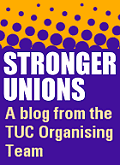Mapping

Followers of my blog will remember that I have recently put together my project plan and that the first item is mapping.
Mapping is just what it sounds like: a process of understanding the important features of a workplace or situation: how many people work in this office, or warehouse or industry, how many are union members, who is doing what, with whom and how? What the hell is going on and how could it be improved on?
Since I’ve been given a remit that could easily encompass the entire working class and the area of London, a city of seven and a half million people, the main difficulty presented by this task is where to start and when to end!
Because I had the luxury of writing my own work plan, I left myself a very generous two to three months for this part, got on the phone to anyone and everyone who seemed interesting and started to set up meetings. This is surprisingly easy: any number busy people have found time to talk a newcomer through their terrain and for this I am eternally grateful.
When I think of the readership of this blog I imagine someone like me: perhaps considering applying to the organiser academy, perhaps about to start a placement. I want to be encouraging but I want to be realistic too. So I’ll tell you the truth: There have been moments when I’ve found myself staring at a blank computer screen wondering how to fill my diary or coming back from a meeting wondering if I’m doing the “right” thing.
You get through it: you look at the contacts you have and the resources in front of you, you get on the phone and you make appointments and talk to people and take notes. Pretty soon filling time isn’t a problem anymore although finding it might be!
You need flat shoes for running about the city, an A to Z and the nerve to talk to a lot of strangers. Apparently in Brazil they call this having a “wooden face.” I would never have known that if it wasn’t for the mapping.
What I’ve found is that generally people are happy to chat and are very helpful. Only very occasionally is someone sarcastic, patronising or clutchy over their knowledge. After a while it’s clicked with me that these are the people who perhaps are not so sure of what they’re doing.
Where people are helpful, I try to cultivate a similarly friendly and open attitude and if possible to do some small favour to show willing: even if this is just passing on a contact or putting them in the direction of some information.
Gradually, gradually, the hopeful little lines on my Gantt chart have begun to look like definite possibilities.
Real things that might get done by real people.
Filed under: Academy, Organising, blogging


